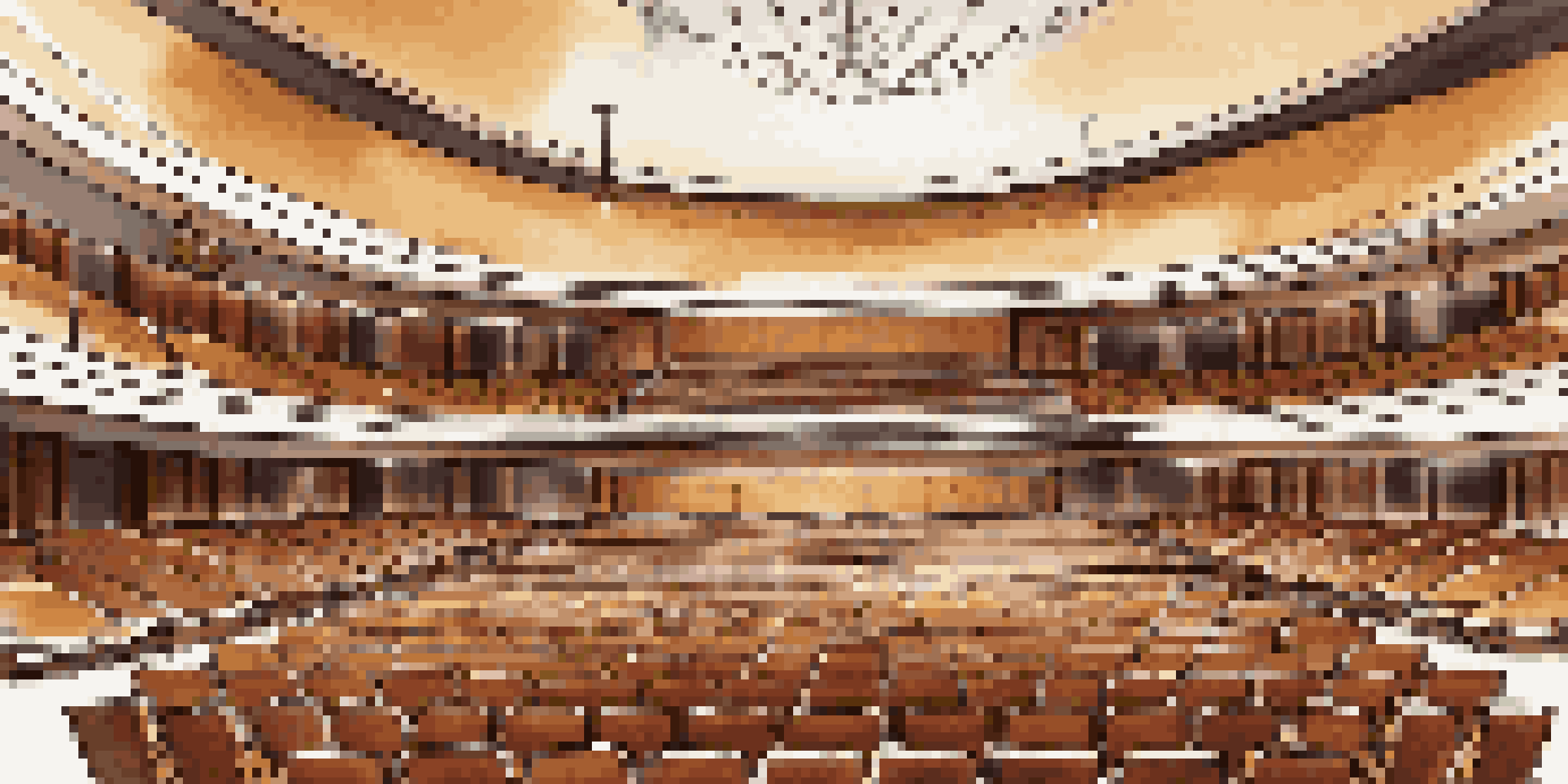The Acoustic Design of Concert Halls: A Study of Sound Waves

Understanding Sound Waves and Acoustics
Sound waves are vibrations that travel through the air, reaching our ears and allowing us to experience music. In concert halls, these sound waves interact with various surfaces, influencing how we perceive audio quality. Understanding the basics of sound waves is essential for grasping how concert halls are designed to enhance the listening experience.
The Role of Materials in Acoustic Design
Materials play a crucial role in shaping the acoustics of a concert hall. Hard surfaces like concrete or glass can reflect sound waves, while softer materials like carpets or curtains absorb them. By carefully selecting and placing these materials, architects can create a balanced sound environment that enhances clarity and richness.
Sound Waves Shape Listening Experience
Understanding how sound waves interact within concert halls is crucial for enhancing audio quality.
Shape and Layout: Key Factors in Acoustics
The shape and layout of a concert hall significantly affect sound distribution. For example, a fan-shaped hall allows sound to spread evenly throughout the audience, ensuring that everyone hears the performance clearly. Architects often use computer simulations to visualize how sound waves will travel in different designs.
The Importance of Reverberation Time
Reverberation time refers to how long sound waves linger in a space before fading away. In concert halls, the ideal reverberation time varies depending on the type of music being performed. Too much reverberation can cause sound to blur, while too little can make it feel lifeless, so striking the right balance is essential.
Materials Enhance Acoustic Clarity
The choice of materials in a concert hall can either absorb or reflect sound, significantly impacting the overall acoustics.
The Influence of Seating Arrangement
Seating arrangement can greatly impact how sound is experienced in a concert hall. The placement of seats in relation to the stage determines how sound waves reach the audience. For instance, elevated seating can enhance sound clarity for those sitting farther back, ensuring an enjoyable experience for all.
Innovative Technologies in Acoustic Design
Advancements in technology have transformed acoustic design in concert halls. Acoustic modeling software allows designers to predict how sound will behave in a space before construction begins. Furthermore, some venues now incorporate adjustable acoustic panels that can change the sound environment based on the performance type.
Innovative Tech Transforms Design
Advancements in acoustic modeling and adjustable panels are revolutionizing how concert halls are designed for optimal sound.
Case Studies: Iconic Concert Halls
Several concert halls around the world are celebrated for their exceptional acoustics. For example, the Vienna Musikverein is renowned for its beautiful sound, largely attributed to its unique shape and materials. Studying these iconic venues provides valuable insights into effective acoustic design principles.
The Future of Acoustic Design in Concert Halls
As music and technology evolve, so too does the field of acoustic design. Future concert halls may incorporate more dynamic and flexible designs, allowing for varied performances. By embracing innovation while respecting traditional principles, the next generation of concert halls will continue to inspire and delight audiences around the world.